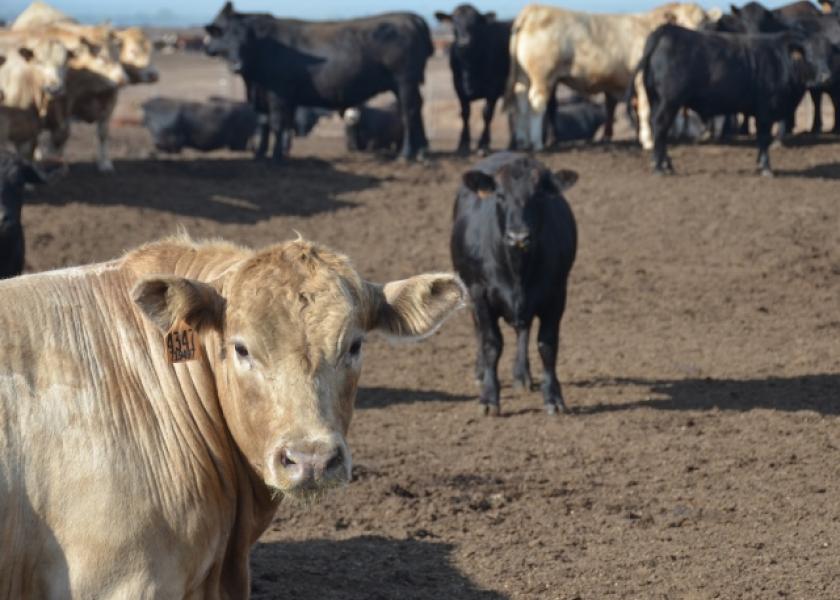Beef Demand: Are Imports Hurting Prices?

With trade being a hot issue in agriculture, Gov. Terry Branstad (R-Ia.) is already prepping for his ambassadorship to China. At the USDA Agricultural Outlook Forum, he expressed that part of his focus will be on reopening the Chinese market to U.S. beef exports.
“Last year, we exported about $130 billion worth of agricultural products from the United States,” said Philip Seng, president and CEO of the U.S. Meat Export Federation.
Cattle producers want to continue to build export demand to help control some of the ‘new range in prices.’
“Prices are down compared to where we have been in the past two to three years,” said Clay Burtrum, a producer from Stillwater, Ok. “If you’re a stocker producer or cow-calf producer, you have to manage your costs.”
The future of trade is uncertain with the possibility of the new administration exiting, reopening or adding new deals. Industry experts say any trade uncertainty is an issue.
“Any type of uncertainty with trade issues is not going to be good for price,” said Craig VanDyke, risk management specialist with Top Third Ag Marketing. “It’s not encouraging buying. It’s not going to get buyers aggressive.”
But industry leaders say demand has been strong internationally.
“We see international markets growing,” said Seng. “We’re also doing a good job of displacing some of our competition here recently.”
“We’re continuing that string of solid exports,” said Don Close, senior analyst for Rabo AgriFinance. “That could be a huge positive factor for the U.S. beef going into 2017.”
Even though exports are strong, industry leaders say there seems to be a misconception about the U.S. importing beef, saying imports are not behind lower prices.
“Actually, our beef imports were down eleven percent in 2016 and they are expected to be down another seven to ten percent in 2017,” said Greg Henderson, editorial director of Drovers magazine. “How does that compare with recent years? Beef imports were down three percent compared to a decade ago.”
“At the end of the day, the products we move, export and import, are different products,” said VanDyke. “We’re importing more lean beef. Why? It’s because we don’t produce [much of] it. So, we have to grind it up here into our lower products to be able to move that product.”
“Cattle numbers were down in 2014 because of the drought,” said Seng. “We imported more beef. There’s been less beef coming in here the last couple of years.”
Seng says if the U.S. is going to continue to be one of the world’s largest exporters, the country also has to be an importer.
“I see us continuing to import beef but I see us continuing to export much more beef,” said Seng.
There are some new deals in the works. In 2016, the U.S. and Brazil reopened its markets for fresh and frozen shipments for the first time since 2003. That made Brazil able to export from more areas of its country.
“They don’t have an individual quota for themselves,” said Kevin Good, senior analyst with CattleFax. “Because of that, they’re limited as far as how much product they can bring in without paying a pretty stiff tariff. I would not suspect Brazilian numbers to increase substantially going forward unless something changes from a trade standpoint.”
“We imported massive amounts from Australia three or four years ago,” said VanDyke. “[When you look at] the quotas for Brazilian beef, they are so miniscule to me. [Those imports are] a non-factor for the time-being.”
There’s also additional export potential in China. Chinese officials announcing plans last year to lift a ban on U.S. beef imports, a product China hasn’t imported since 2003.
“The discussion is slow but we’re making progress,” said Colin Woodall, vice president of government affairs of the National Cattlemen’s Beef Association. “We did get an official announcement from the Chinese government that they lifted the ban. We have to focus on the export protocols.”
That means the U.S. is yet to ship beef to the country.
“There are concerns with eligible cattle from Canada and Mexico,” said Seng. “These are things I think can be worked out. Once the protocol is established, the Chinese will have to come over and audit.”
Back on the range, producers hope Washington will continue to build relationships that help expand the cattle trade.







